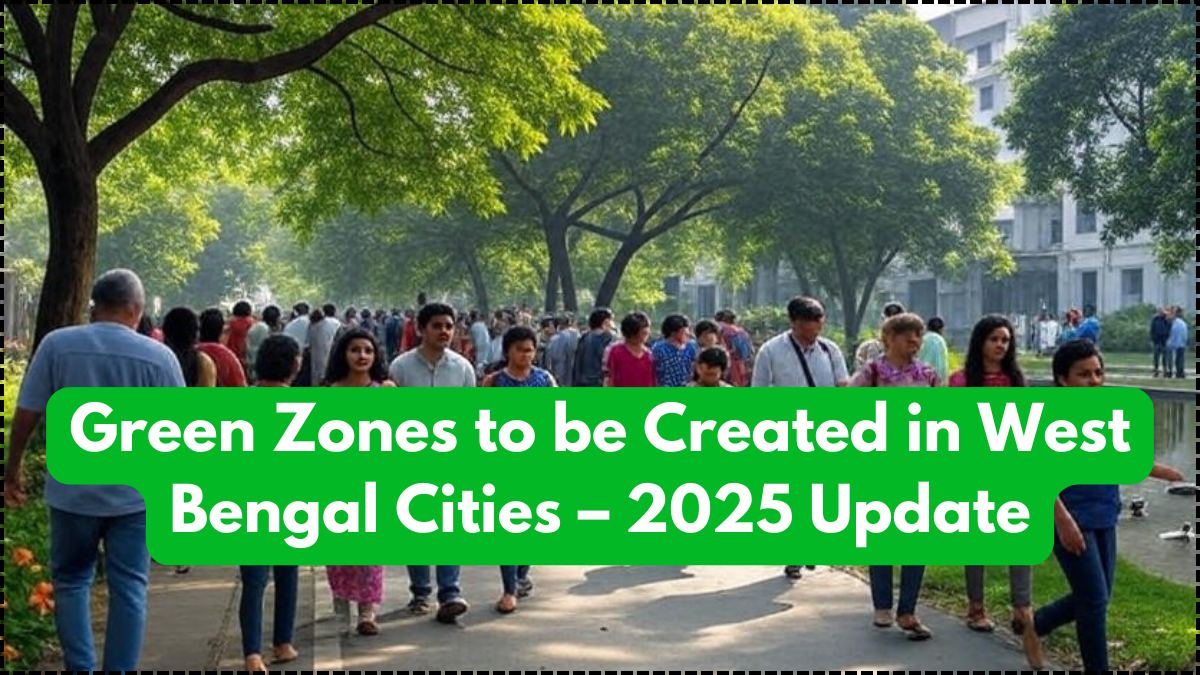With increasing urbanization and environmental degradation, West Bengal has taken a pioneering step by initiating the Green Zone Planning WB project. In 2025, the state government has announced a robust strategy to implement green zones in key cities, aiming to curb pollution, enhance livability, and meet long-term pollution control targets. This forward-thinking initiative aligns with India’s broader environmental mission and offers a scalable model for urban ecological reform.

Understanding the Green Zone Concept
Green zones refer to designated areas with minimal pollution levels, abundant vegetation, and strict environmental regulations. These zones are often built around parks, urban forests, and low-emission transport corridors to help mitigate the adverse impacts of industrialization and urban sprawl.
Key features of green zones include:
-
Use of renewable energy
-
Low vehicle emissions or car-free policies
-
Dense tree coverage and green belts
-
Strict noise and waste management controls
-
Support for biodiversity and sustainable urban farming
The Green Zone Planning WB is focused on implementing such environments in cities like Kolkata, Asansol, Siliguri, Durgapur, and Howrah, starting in late 2025.
Pollution Control Targets for 2025
The pollution control framework under this scheme sets clear goals. With air quality declining due to traffic and industrial emissions, green zoning aims to achieve a 30% improvement in AQI levels in targeted areas by 2026. Here’s how West Bengal plans to implement it:
-
Converting at least 15% of urban land into designated green zones
-
Phasing out high-polluting vehicles and industries from key zones
-
Promoting vertical gardens and rooftop plantations
-
Installing air-quality monitoring stations
This ambitious drive is backed by both central and state-level climate adaptation funds.
Implementation Timeline and City-Wise Targets
The Green Zone Planning WB program will roll out in a phased manner. The table below outlines the proposed city-wise targets and deadlines:
| City | Green Zone Area (in sq. km) | Target Completion | AQI Reduction Goal |
|---|---|---|---|
| Kolkata | 25 | December 2025 | 35% |
| Siliguri | 12 | November 2025 | 30% |
| Durgapur | 10 | October 2025 | 28% |
| Asansol | 8 | December 2025 | 32% |
| Howrah | 6 | September 2025 | 25% |
This phased rollout ensures city-specific planning based on geographic and demographic needs.
Role of Local Bodies and Public Participation
Municipal corporations across the state will be central to the success of Green Zone Planning WB. Each body is required to submit a local green infrastructure blueprint in coordination with the State Pollution Control Board.
Residents, RWAs (Resident Welfare Associations), and NGOs are also being involved in:
-
Tree plantation drives
-
Segregated waste collection
-
Setting up solar rooftops
-
Encouraging the use of bicycles and EVs in designated zones
Incentives, including tax rebates and grants for eco-friendly renovations, are expected to boost public participation.
Benefits of the Green Zone Planning Initiative
The implementation of Green Zone Planning WB carries numerous long-term benefits, not just for pollution control but also for urban well-being and sustainability:
-
Lower respiratory illnesses due to improved air quality
-
Enhanced property values in green zones
-
Biodiversity restoration in urban areas
-
Reduction in urban heat islands
-
Better mental health outcomes due to green spaces
These combined outcomes are expected to reshape how urban spaces in West Bengal evolve in the coming decade.
Conclusion
The Green Zone Planning WB initiative is a landmark step toward transforming West Bengal’s cities into sustainable and eco-friendly spaces. With comprehensive pollution control measures, phased implementation, and active public involvement, the state is poised to become a national leader in green urban planning. As the first phase concludes by the end of 2025, its success could serve as a blueprint for other Indian states.
FAQ
What is the purpose of Green Zone Planning WB?
The Green Zone Planning WB initiative aims to reduce pollution and promote ecological living in major cities of West Bengal by creating dedicated green zones.
Which cities will be included in the 2025 green zone plan?
Cities like Kolkata, Durgapur, Siliguri, Asansol, and Howrah are included in the 2025 rollout.
How will this project help in pollution control?
It includes vehicle restrictions, increased green cover, clean energy adoption, and air-quality monitoring to reduce pollution levels significantly.
Will property owners benefit from the green zones?
Yes, residents in green zones may receive incentives such as tax rebates and improved property values due to a healthier environment.
When will the Green Zone Planning be implemented?
The project is expected to begin in phases from August 2025 and be completed by the end of the year in targeted cities.
Click here to learn more